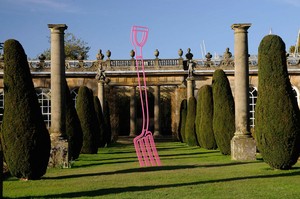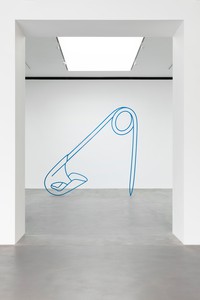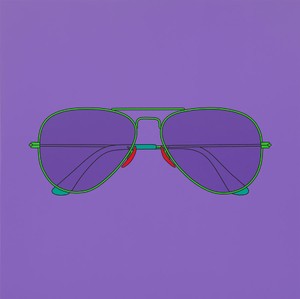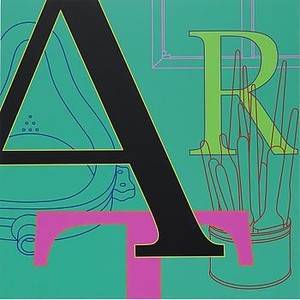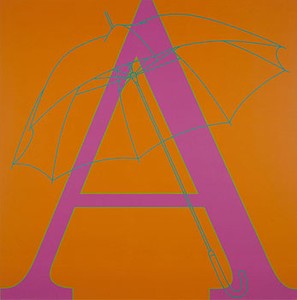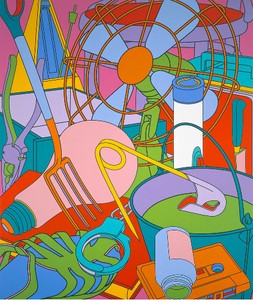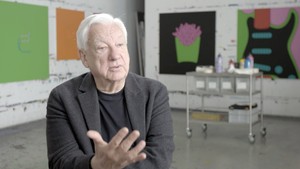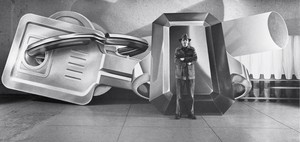I have always thought everything important is right in front of you.
—Michael Craig-Martin
Michael Craig-Martin depicts everyday items with a nuanced simplicity that exposes the tensions between objects and their representation. His work is distinguished by exceptional draftsmanship, vibrant color, and uninflected line; intensely visual, it is rooted in an exploration of the relationships between perception, language, and meaning.
Born in Dublin in 1941, Craig-Martin spent his formative years in the United States, where his family moved in 1946. During the 1960s, he earned a BA and MFA from Yale University School of Art and Architecture, studying alongside Jennifer Bartlett, Brice Marden, and Richard Serra; he also drew inspiration from the legacy of Josef Albers and the rise of Minimalism and Pop art. Craig-Martin returned to the United Kingdom in 1966, and in 1972 he participated in The New Art, a landmark exhibition of Conceptual art at the Hayward Gallery, London. The following year, he produced An Oak Tree (1973), which helped shape the landscape of British Conceptualism. An Oak Tree comprises a glass of water on a shelf and an accompanying text in which the artist explains that, outward appearances notwithstanding, he has changed the humble object into the titular plant. The fascination with semantics revealed by this transformative maneuver has remained a key aspect of Craig-Martin’s practice.
In the later 1970s and 1980s, Craig-Martin shifted his practice from readymade objects to their pictorial images, reimagining the quotidian from an unconventional perspective in wall drawings executed in a range of scales with black crepe paper drafting tape originally designed for electrical circuitry. In these consciously inexpressive, “styleless” images—produced by making precise depictions from life on sheets of clear acetate, then projecting and tracing the results onto gallery walls—he explores an ever-expanding litany of everyday objects, from safety pins to chairs, light bulbs to laptops. While applying effects of layering, intersection, and transparency, the artist renders his subjects, each alone, without shadows or signs of use or aging, as if according to Platonic ideals. These occupy, in his words, “a philosophically defined space somewhere between the particular and the general,” and ultimately function within a wholly original visual and emotional lexicon.


